Desert Valleys, California
After a LONG year of Wuflu house-arrest and Lyme physical challenges, I was feeling pretty confined. It’s a gross understatement to say that we were very ready to travel again.
Howie’s new 4×4 configuration had barely been “tested” in the few short outings we’d taken, mostly just to park in relatives’ driveway for a visit. My Lyme had gradually gotten to be much less debilitating, and the country was bravely trying to shake off the Wuflu paralysis (albeit with varying success).
So, we bravely slung the little bike on the front, hooked Jayk up to the towbar, and off we went. After such a long hiatus, even with 75,000 miles behind us, it somehow felt a bit new.
OWENS VALLEY (southern tip)
Mindful of the possible need for medical attention for me, or mechanical attention (for Howie), we decided to stick relatively close to home (1-2 days away), and limit ourselves to California traveling. We also wanted to avoid the frequent March cold snaps, so we elected to stick to two southern low-desert valleys. The Panamint Valley is just west of Death Valley, and the Owens Valley is further west of Panamint, and home to the somewhat-known highway US-395.
[NOTE: If you’re wondering why we didn’t include Death Valley in our wandering, the answer is simply that it was thronged with tourists. Karin’s brother had gone through just a few days earlier, and spent one night tangled up with RV’s and tenters, who were filling up the available camp sites. The combination of Wuflu confinement and Easter week had produced an over-abundance of all kinds of pent-up travelers.]
Even with all such “limitations”, we had a wide world left to explore, and still with blissfully few people in most of it.
Fossil Falls
Our first stop was at a place I’d discovered on a Facebook page (Eastern Sierra and Scenic Highway 395, highly recommended if you “do” FB). It’s just a mile off of US-395, and home to a curious collection of visually-striking, water-worn lava beds. The nearby BLM camp has only 11 sites, but there are plenty more areas for dispersed camping.
[BTW, the BLM signage says that only 4 of the sites are RV-suitable, but we found that to be super-conservative; most of them would fit Howie. For LOTS more info/details on Fossil Falls, look it up on desertusa dot com]
Fossil Falls is also immediately adjacent to an active mine, with (a few) trucks rumbling back and forth during weekdays. The mine operates up against the big local cinder cone (Red Hill)… those are mine tailings off to the right. The nearness to the highway and mine would suggest that the area might be too noisy or “civilized” for our boondock mentality, but in fact it was mostly quiet, lonely, and peaceful — and with 4 bars of 4G too!
Here’s our closest neighbor, 150 yards away (left). The hills in the far distance are inside the heavily-guarded China Lake area, a Naval Air Weapons training and development center. Not much in that direction until the other side of the hills.
— and the southern Sierra Nevada (about 45 mi south of Whitney), on the other side of US-395.
Did I say “peaceful”? I wasn’t counting the wind. Spring season can bring capricious weather to the Eastern Sierra, and the desert proper for that matter, and for two days out of three we were buffeted and blasted by 25-35mph winds morning, noon, and night. I have to say that we did become quite accustomed to being lulled to sleep at night by Howie’s rocking and swaying. But we never did get used to the door being yanked out of our hands when coming and going. We had the great good fortune to be camped in an area NOT enveloped in giant dust clouds, but they were always very nearby.
Desert Camping Tip: Don’t camp downwind of mine tailings or dry-lake playas.
Special Tip Addendum: the wind can come from any imaginable direction, and can change by the day and hour, so you’ll never really know where “downwind” is.
In the windiest conditions, in the barest and scraggliest of desert-dirt, we would see these little birds (about 4” long) crouched down to the earth, pecking and scratching, apparently getting food quite successfully.
Gotta make a living, y’know?
So how windy was it? This trucker found out, when his rig was literally blown off the edge of US-395 a few miles south of our camp.
During one of the more gentle-wind days, we did some exploring of the area. A few miles south on a rough powerline road, there’s a nice overlook of the appropriately-named Little Lake. Looking back toward camp (see “our” cinder cone?), the Falls are in between, down below the surrounding terrain.
Seeing the Falls
Getting to the Falls can be either easy or challenging. To reach them from the “front” side, you drive to the posted trailhead and hike over ankle-twisting lava. My joints were still pretty limiting, so we explored around and found the “back” side, entering from the nearby playa. This was a smoother, 2-mile-long hike, and allowed me to get right to the falls without the need of Ace bandages.
Arriving mid-afternoon, the back lighting didn’t do the place justice, but you still get the idea.
These Falls are dry now, but 20,000-10,000 years ago they were flowing with copious amounts of water that coursed down the Owens Valley. Seasonal rains, plus snow-melt from the Sierras and the Whites, tortured and scoured the old lava flows, creating strange, artful forms in the desert. Geologists estimate it took 10,000 years or so to create these sculptures.
Occasionally, a small rock would get caught in a water vortex. The water flow was so powerful, and prolonged, that the rock would spin around and erode a vertical hole into the stone base. This hole is about the size of a hat brim. It’s been filled in with dirt and debris, and is actually about as deep as its width.
Scattered all over this area are millions of small obsidian chips, none larger than a quarter or 50-cent piece. They are the remnants of a large obsidian deposit to the east. I read about the deposit, but could never spot it; it is likely inside the China Lake boundary and not accessible.
Obsidian was a huge draw, back when the Indians roamed the desert. Tools made from obsidian are legendary for their sharpness and durability.
Hanging Out
Unusual sights — After hiking away from the Falls, and driving back to camp, we happened upon an unusual sight, even for the outback desert. Somebody was camped at the edge of the playa, with an impromptu “corral” containing two donkeys and a llama.
We stopped to chat; he lived over near Kernville, and just wanted an outing with his “pets”. Later in the week, the old gent took his donkeys out for a day trip, just sightseeing around the territory. This was certainly an unexpected sight for 2021, and it drew me back to the 1800’s with visions of dusty old desert prospectors and mining exploration.
Little Repairs — While the winds were howling, and traveling on the highway in Jayk, I had to pull the steering wheel so hard into the wind that it kept triggering the “smart” traction control in the 2013 JK Jeep. Since the wheel was already a bit ‘off’ to the left anyway, I decided to tweak it more to center. Karin was kind enough to help me adjust the tie rod. This is a typical example of the many little chores that pop up on a road trip.
(BTW, Karin didn’t actually know what a “tie rod” was, but she’s such an incredible trooper, and follows directions to the “T”.)
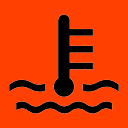 Larger Issues — For a year or more, and now especially on this trip, Howie’s water temperature had been running warm, like 10-15F hotter than usual. Especially with outside temps in the 60’s, this was a warning sign I could not ignore. So one full day was spent making phone calls and traveling to Ridgecrest to get the engine thermostat exchanged. It might have been possible to do this in camp, but difficult at best. There was also the issue of spilling coolant in the boondocks, not an eco-friendly action.
Larger Issues — For a year or more, and now especially on this trip, Howie’s water temperature had been running warm, like 10-15F hotter than usual. Especially with outside temps in the 60’s, this was a warning sign I could not ignore. So one full day was spent making phone calls and traveling to Ridgecrest to get the engine thermostat exchanged. It might have been possible to do this in camp, but difficult at best. There was also the issue of spilling coolant in the boondocks, not an eco-friendly action.
Alas, the thermostat swap did not fix the problem. More attention would be needed, and our trip became no longer open-ended. We’d have to get home to give Howie’s temperature issue some proper attention.
A Short Ride
One delightful day, we were greeted us with “light air”, and it was time to make some 2-wheel tracks. Not that I couldn’t get to anywhere that I wanted to go with Jayk – those of you who ride motorcycles will understand. The rest won’t. Let’s just leave it that riders must ride. I rolled my little XT250, “Bikie”, down off of Howie’s rack and toodled around for a while.
I didn’t go too far, for my skills are a bit rickety, and the roads had occasional treacherous spots. But I did get over to the China Lake boundary. They make no bones about staying the hell out of there. They also have signs all along the barb-wire fencing, about every 50 yards or so for miles and miles. It’s a super-high-security installation – they probably have pictures of me, taking pictures. I had a great interest in seeing what the road would reveal – but I had zero interest in a long conversation with Military Police; I stayed out.
As often happens in the vast deserts, powerline maintenance roads are some of the farthest reaching. And I always find it odd, that some sections of these roads are nearly super-highways, while other parts of the same road are Jeep-4WD only, white-knuckle affairs. Guidelines? Just don’t drive fast, because the tricky sections show up instantly and with no warning. Riding/driving with the prevailing light behind you also can be severely treacherous.
I was carrying only a little food and water, and no survival gear, on roads seldom driven by others (days? weeks? months?). So I didn’t ride far from camp, and most of the time, I could spot “our” cinder cone in the distance. But even so, it was reassuring and lovely to see Howie peeking above the lava-strewn terrain, as I rolled carefully back “home”.
Oh By The Way… That cinder cone, Red Hill, is a geological youngster. Indian oral history reports it being named “the Growler” as little as 700 years ago, for the subterranean rumbling which came from beneath its dome. Today, it’s mined for volcanic rocks, which I assume are used for artful construction or landscaping.
Changing Camp
Late in our stay, we decided to explore some other campsites, and we found an appealing location on the western edge of the playa. Even though we’d be moving soon, we trekked Howie across the austere flatness. It was mid-day, and the light was also very flat; the playa was punctuated occasionally by deep ruts left over from the wet season, and they were very difficult to see in advance.
Right in the middle of the playa stands a fairly fresh windsock (they don’t last long in the desert sun). Later, we saw some private planes come in, land for a short while, and take off again. All in a day’s entertainment.
We ended up at the blocked end of the old road, east of the Falls proper, where we’d jeeped in previously for our hike. It was a total change of scenery, only a mile or two from the BLM campground. Pretty cool, free (of course), and likely where we’ll camp the next visit.
So close to the highway, we again enjoyed the luxury of 4G everywhere we explored or camped. It allowed us to receive a phone call from Karin’s brother, and we agreed to meet-up in a few days, over in the next valley eastward.
PANAMINT VALLEY
Down the road about 40 miles or so is Ridgecrest, where we re-provisioned with gas, water, propane, etc. There’s a great little hardware store just outside Inyokern, on the way to Ridgecrest, where it was super-simple to get the propane and water – these commodities can occasionally cause some minor searching/seeking, so it was a pleasure to find the store.
Pinnacles
Our first stop in the Panamint was at a favorite spot (well, except for the gawdawful washboard entrance road). Trona Pinnacles is a collection of tufa upwellings, remnants of an age when Searles Lake actually held water.
[Strictly speaking, the Pinnacles are in Searles Valley, a small depression south the much-larger Panamint.]
After braving the bone-jarring ride in, the odd geological formations are a welcome reward.
Bit of a steep downhill, and then a winding road amongst the formations…
As with previous visits, we were treated to a splendid, peaceful camp with outstanding surroundings and views.
A mid-day siesta was a serene treat…
…and the sunsets are well worth waiting for.
Wouldn’t you know it, we barely had time to enjoy our camp, when our phone rang again; it was the confirmation call for our meet-up. With barely a day to “settle in”, we nevertheless happily drove northbound for our impromptu get-together. (Uhhh… “happily” does NOT include that damn access road. Ugh.)
Surprise Canyon
We drove nervously north away from Trona. The road is reasonably flat, but there is a miles-long grade at the northern end of Searles Valley, and Howie’s temperature was the most at risk in slow climbs. We took the precaution of Karin driving Jayk separately, but even so, that big 8.1L engine saw a water temperature of 224F, ouch.
Coming down into the Panamint, and blissfully watching the gauge drop, we leveled out on the long road up the valley. Up ahead, a car had stopped in the middle of the oncoming lane (dirt shoulders are suspect), and was flashing his lights. Roadside trouble? We were well equipped to help, and we slowed down.
As we pulled up closer, we saw what had interrupted his travels: no car trouble, just a couple of the local wild burros in the roadway. One of them was particularly assertive…
These charming beasts are WAY accustomed to humans and are extremely tame in this region. In other parts of the deserts, ranchers give them a hard time (competition with cattle), and they’re more skittish. Here, however, dumb tourists even feed them (that’s a big no-no). This guy was so accustomed to hand-outs, he was even checking US out while waiting for goodies from the car’s occupants. But no deal (good), the driver was simply snapping pictures — while his passenger was making sure she wouldn’t get burro-bit.
[FYI, Burros vs Donkeys – same species, but burros are essentially small, wild donkeys with lots of body hair. Donkeys are common, domestic “beasts of burden” on many continents.]
After that, it was clear sailing (thermally speaking) and we drove just north of Ballarat to the dispersed camping area near Surprise Canyon.
Hey, guess what we ran into on the way in?
The dispersed area has space, and more space, and multiple choices of flat/level camp sites. Siegy had picked one next to a huge fire ring, plenty of room for all of us. Earlier, before the trip, I’d made tentative plans to meet my friends Chris and his son Spencer, but we were both in no-signal areas. Fortunately, we both had InReach devices and were able to do final plans. Consequently, besides the four of us family folks, Chris and Spencer would also be coming by; we made good use of the room.
Chris was traveling on his adventure bike, a Yamaha Tenere 700, and well-suited to the terrain; Spencer, on the other hand, was driving his wife’s pristine white SUV, which would require a meticulous cleaning — with toothbrush — before returning it to her. Both of them were staying in their tents, while the rest of us reveled in our vastly more comfortable RV’s. But it was a quiet night, and nobody suffered.
Surprise Canyon itself has a semi-decent road, which winds up through great scenery to old mine works. It’s a great outing for an hour or a day.
In addition to its namesake, the Surprise Canyon area abounds with a multitude of roads and mining relics; there are also a seemingly endless supply of unmarked hiking treks up into the hills and more minor canyons. It’s really easy to spend a week in the area, and never go to the same place twice.
South of the Canyon a few miles is the single-occupant “town” of Ballarat, and east of Ballarat, Pleasant Canyon Road winds back up into the hills. “Pleasant” it is indeed, for just a few miles east, water seeps from the ground and creates that surreal joy, a desert riparian area. From the dry flats, and one scraggly little scrub brush every few yards, the growth changes to dense green willows that threaten to obliterate the track. Jayk got an artful dose of “desert pin-striping” going up this road.
Things can get especially entertaining when someone comes from the other direction. The track was about 2 feet narrower than Jayk when I met this guy. His comment was “Well, I don’t think we could have found a worse place to run into each other.” After some grins and grunting, we managed to get past each other – with about 2” of clearance on our driver’s side mirrors, and lots of scratching and screeching of brush along the outboard sides. To state the obvious: you don’t do this kind of traveling with “delicate” vehicles.
Just as obvious: You do NOT want to be exploring this area in a low-clearance vehicle…
The road is a long one, and actually affords the opportunity to go all the way around the mountain and back up to Ballarat, about a 20-mile loop (maybe). But we had a late start, and the roads were likely rough, and rougher, so we elected to turn around at a short side road to an active mining site.
Amazingly, there’s a well-preserved mining-camp building there, with no vandalism, no graffiti. How refreshing…
Camp Life
It was a bit surprising to us to discover that we had arrived during Easter Week / Spring Break (for some), and our usually empty-space camping area had quite a few visitors. It wasn’t oppressive, but it wasn’t exactly what we were used to out in the unpopulated desert.
North from us, up Indian Ranch road a mile or so, there was a huge encampment, maybe a dozen RV’s. (You can tell what level of privacy/crowding we expect when I use the word “huge” to describe a dozen. Typical RV parks (that we never go to) have 40-120 vehicles.) On casual inspection, it seemed like each and every one of the RV’s had brought along at least two quads, and a few more dirt bikes as well.
Every morning for several days, the buzzy little beasts would zoom by our camp (about 1/4 mile away), headed out for the day’s off-roading. The procession would last 20 minutes or so, and we’d laughingly guess who were the youngsters (zoom zoom) and the elders (putt putt).
As luck would have it, the obnoxious winds were on our side. No matter the time of day, during which the winds would routinely completely reverse themselves, the prevailing air blew the off-roaders’ dust away from us. How cool is that?
In the late afternoon or early evening, back they’d come, zooming and putting, to roost up for the night. It wasn’t bad, but for sure it wasn’t lonesome.
All that said about quads and bikes, I had brought my own dust-generator, and what better place am I going to find to do some 2-wheel exploring?
I rode up the Canyon road and explored around a bit. Well, until I found a rogue patch of sand and got my sorry butt spit off the bike. Oh well… that’s dirt-biking… half riding, half falling off.
Also north up Indian Ranch road, there are several spots that receive some water seepages from the hills (probably why the ranch is there). The old/dead brush there makes superb hardwood firewood, and we threw a bunch on top of Jayk and brought it back to camp.
I’ve thought about this: There MIGHT be something better than sitting around a campfire with family and friends… but I honestly don’t know what it could be.
The West Side
One of the last days there, Karin and I took Jayk to explore on the other side of the highway. It looked pretty empty over there, so we went to see what it was like. We drove south on the main highway, and turned north (right) on Nadeau Road.
To our surprise, Nadeau was paved, for miles and miles. It was surprising because on a previous trip, I’d found the northern section of Nadeau to be a bone-crushing rock garden, with a max speed of 2-5mph. We sped happily along, not a soul in sight.
Well, there was one guy… but except for him, nobody at all.
It was a pretty odd experience, this paved road in the middle of nowhere, and especially the power poles. Eventually, we realized that we were headed for the far-distant mine, whose lights we’d seen every night from the other side of the valley. It’s the white stripe in the photo.
Sure enough, the pavement served only the mine. Every other road and track in the area was unpaved, and as rough as a corncob. We traveled westward for miles up one rough, rocky road, which ended abruptly at a trailhead. Further travel was on foot only, up a beautiful and rugged canyon… sadly, not much of an option for me yet. We let it go for another trip.
After several lovely days, we all packed up and headed homeward. There’s still a lot left to explore, and the camp is a great base of operations. That said, we may very well camp on the west side next time, somewhere off of Nadeau Road. It’s REALLY empty over there.
Lake Isabella
Just because we were headed home for serious maintenance (on Howie), didn’t mean we couldn’t enjoy the journey. We decided to make an overnight stop at one of our favorite “on the way” camps, Stine Cove on the shore of Lake Isabella. It’s a no-fee USFS camp with no facilities except a lone vault toilet. It would be pretty unexceptional, were it not for the lake and the isolation. For us, it’s a great “transition” spot to chill before either “getting away”, or going home.
I’d heard that there were some issues with the lake’s dam, but I wasn’t prepared for how extremely it had affected the Lake, and of course the shoreline. At roughly 80 feet below its peak, it’s a scruffy shadow of the last time we were there. And yet, it’s still a quiet and serene shoreline; we were still glad to have stopped by.
Karin is walking along what would have been the water’s edge during our last visit.
Here’s a shot from a previous visit. Jayk is out (below) where Karin recently walked (above)
I don’t know how long they’ll be working on dam reconstruction, or how much longer still it will take to refill the Lake. Full or empty, we’ll still be back for our “transition” stops.
Next day, it was a pretty drive down the always-gorgeous Kern River canyon, and then homeward bound. Engine temperature battles, but we made it okay. Gonna fix up Howie’s ills and get out again as soon as we can.
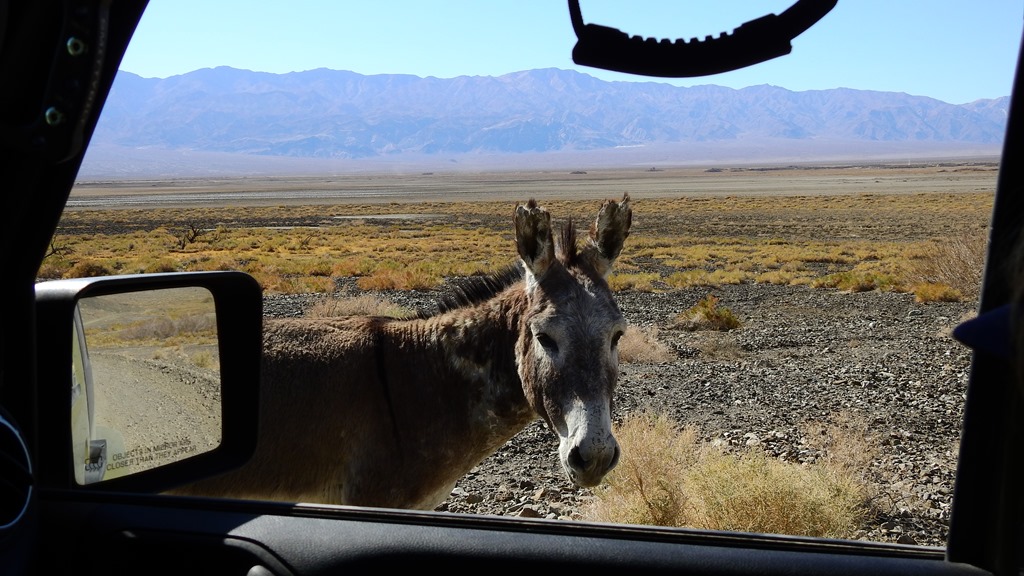
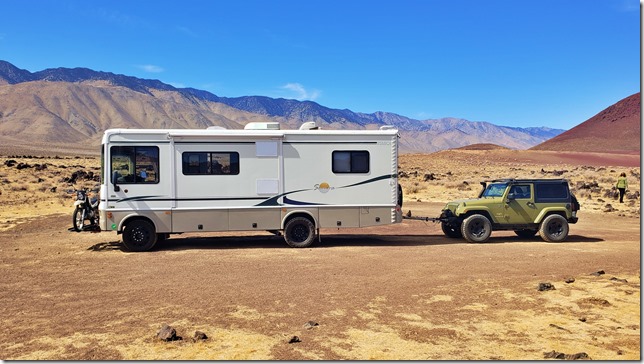
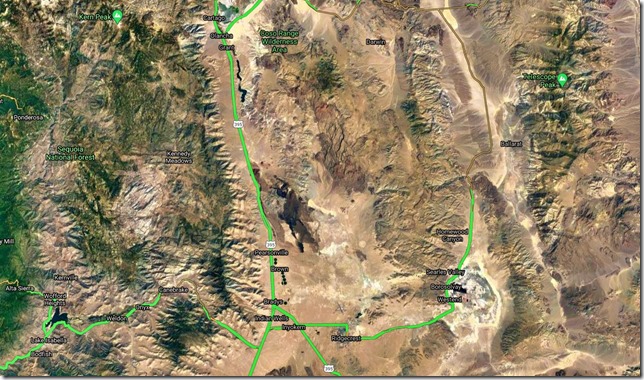
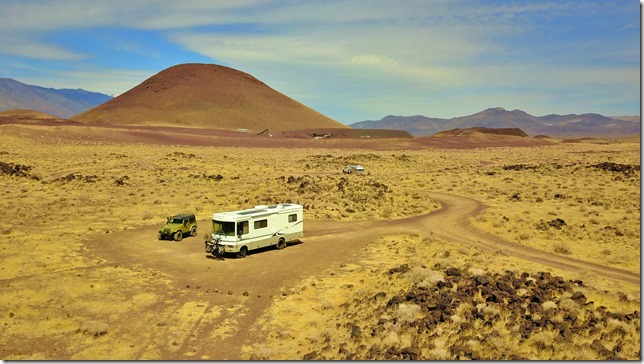
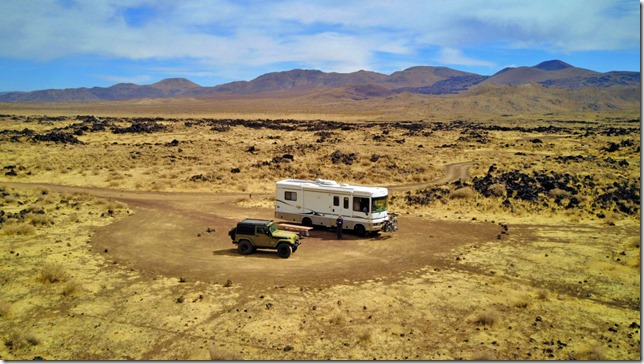
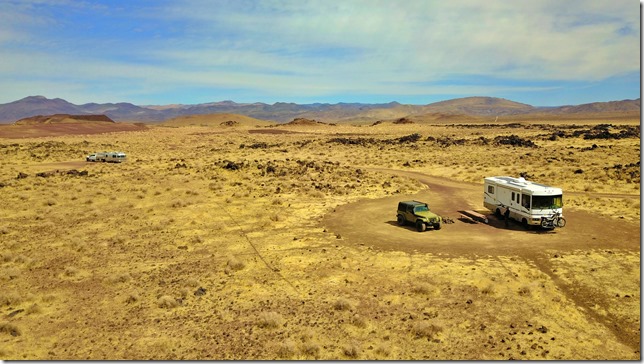
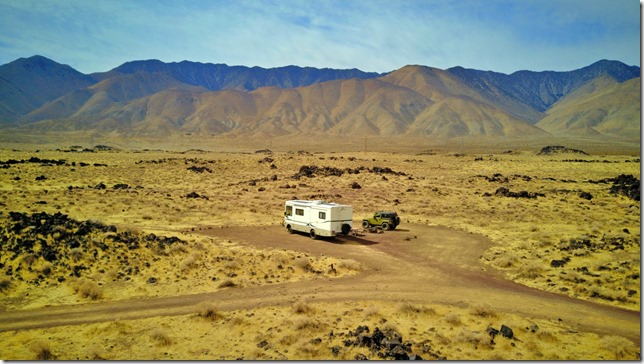
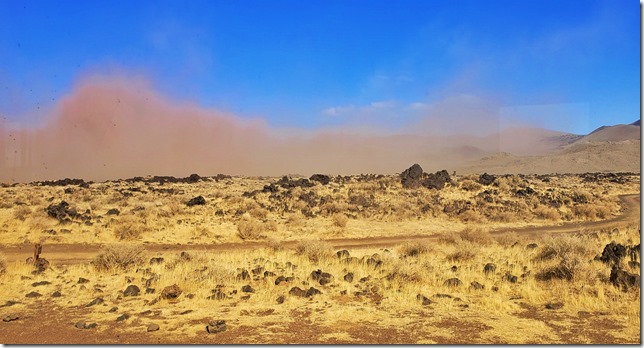
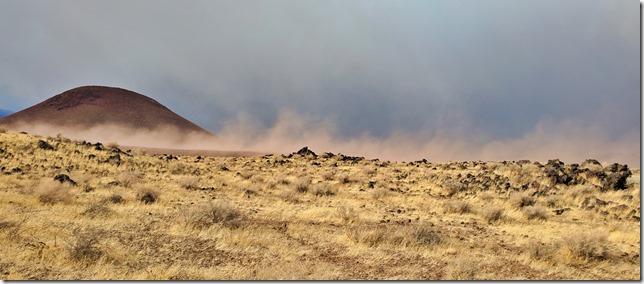
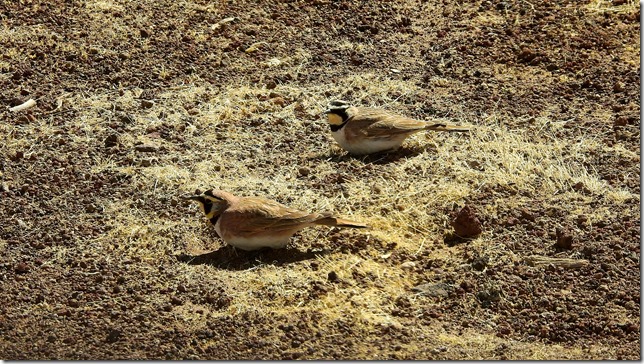
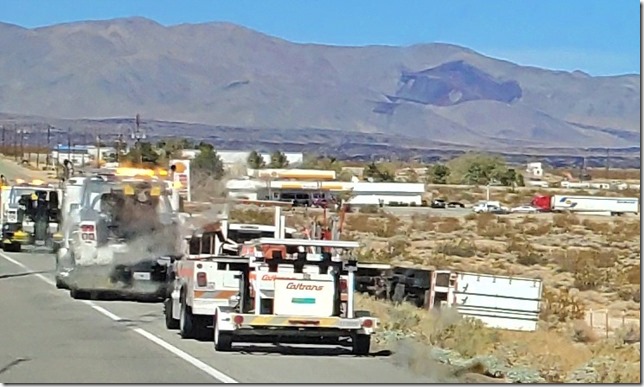
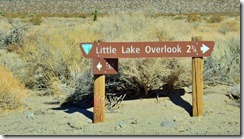
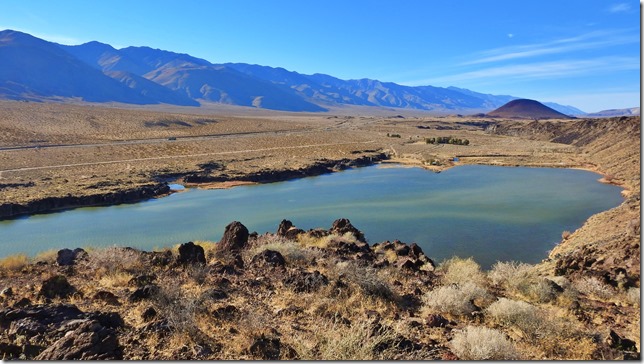
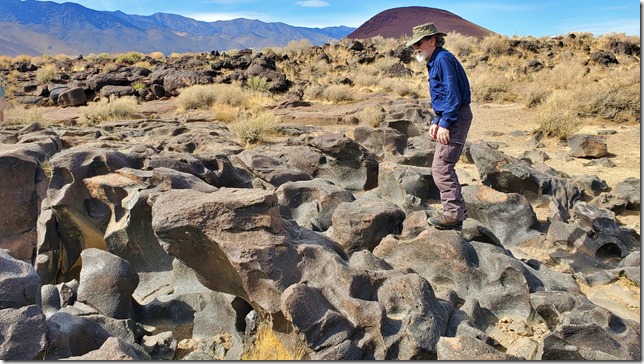
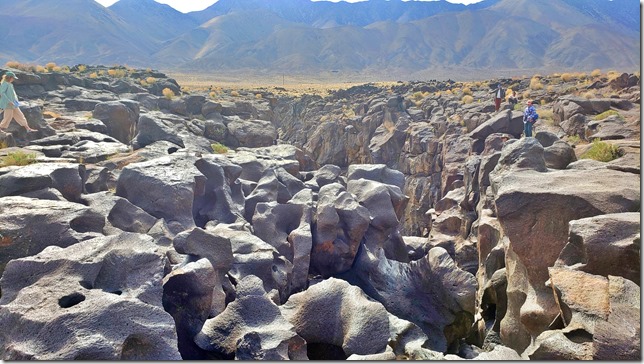
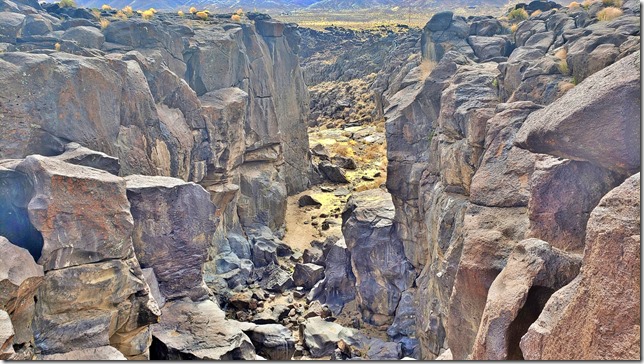
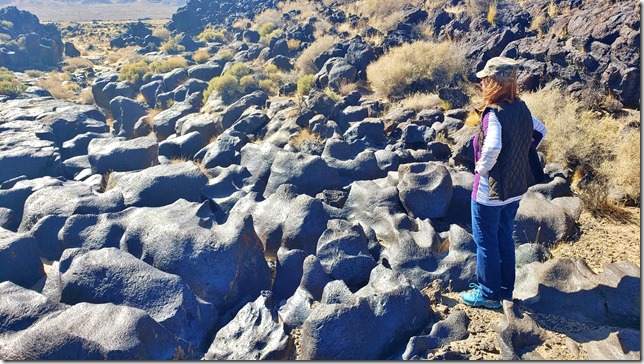
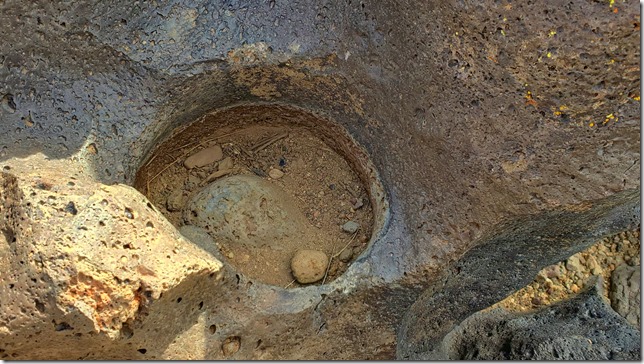
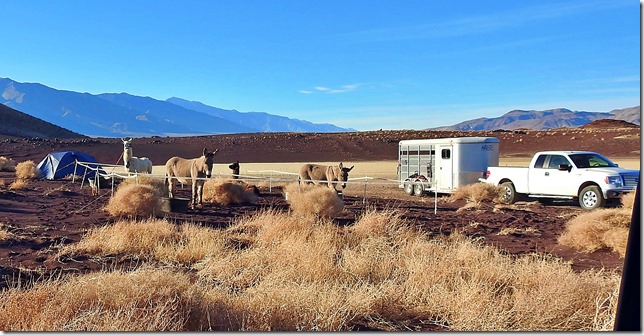
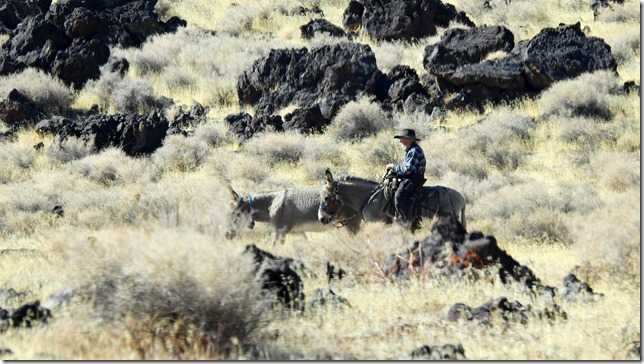
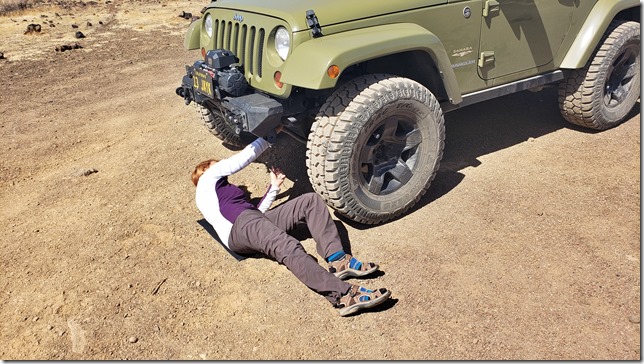
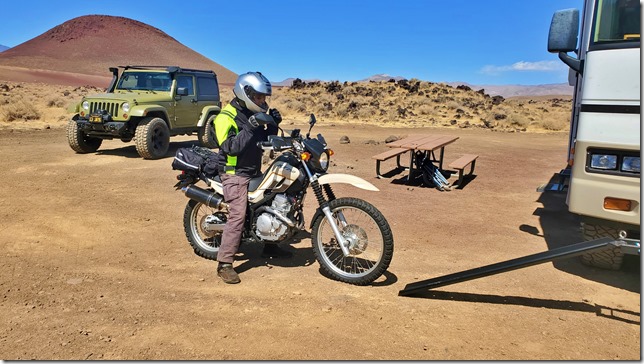
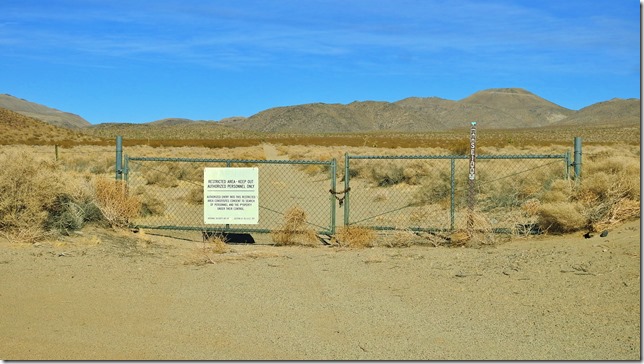
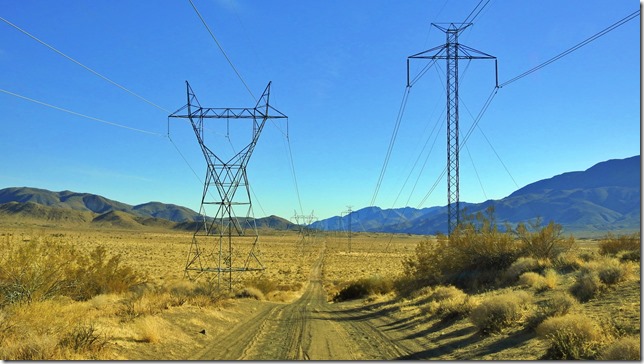
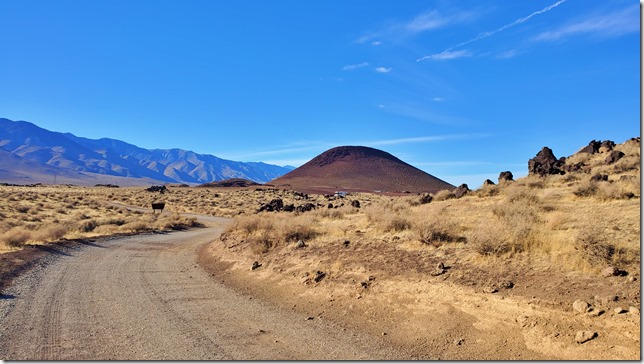



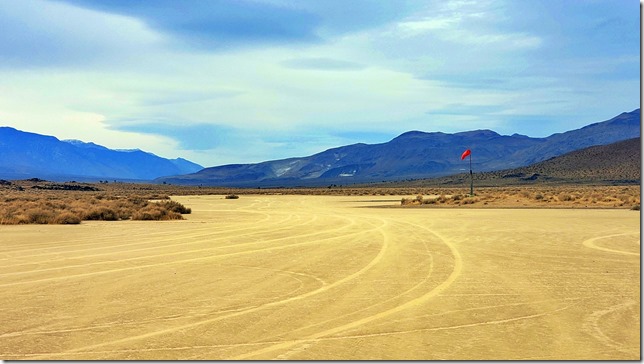

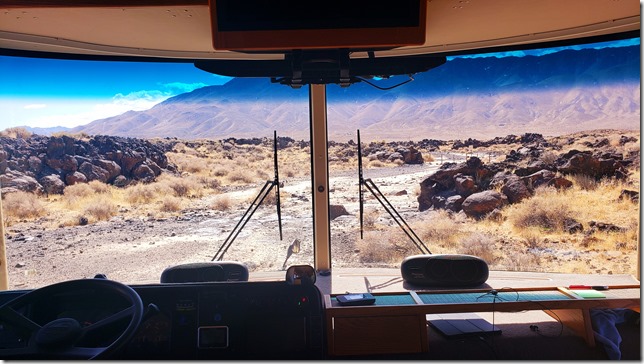
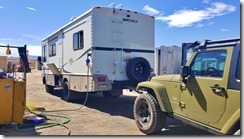
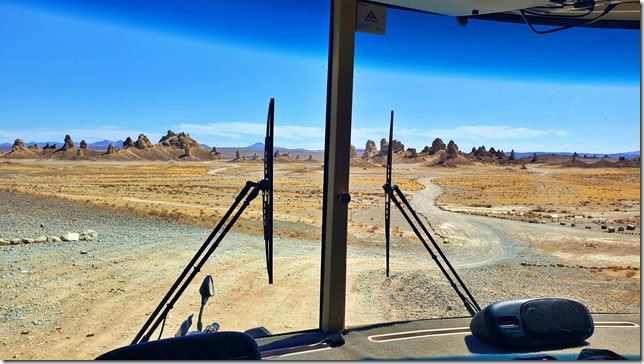
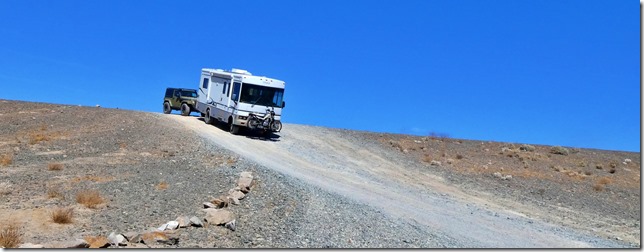

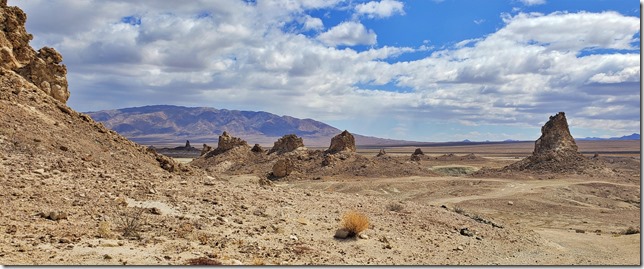
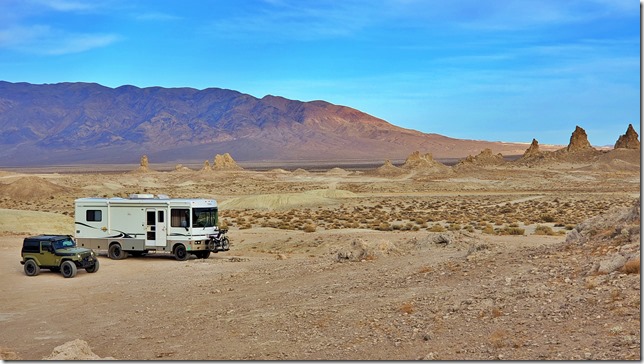
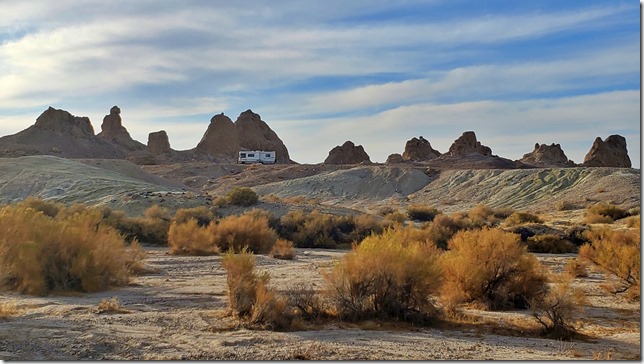
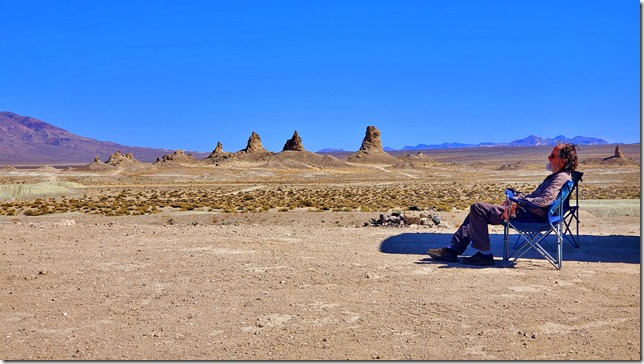
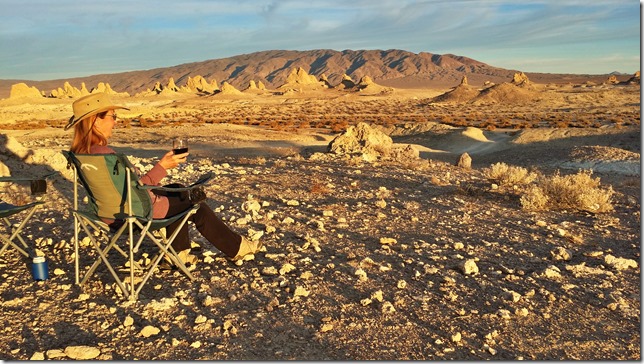
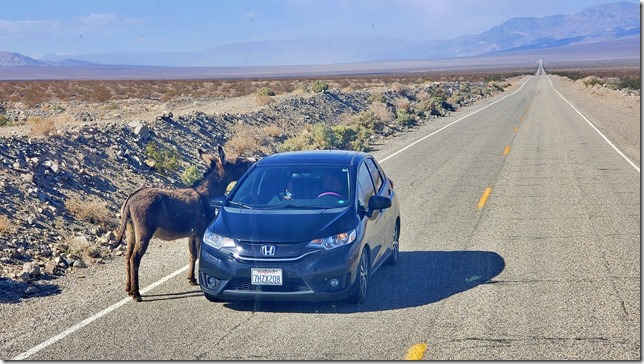
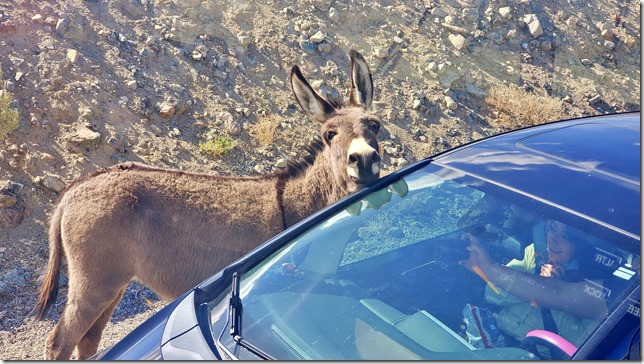
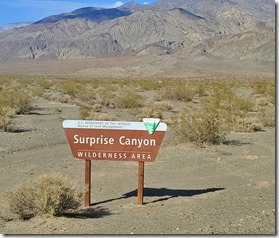
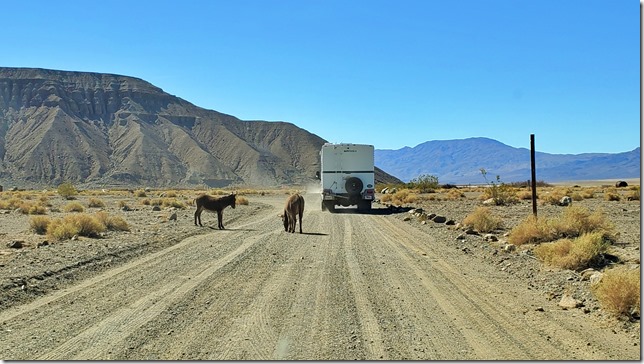
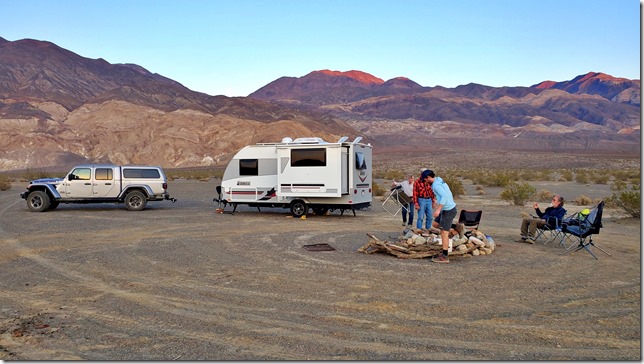
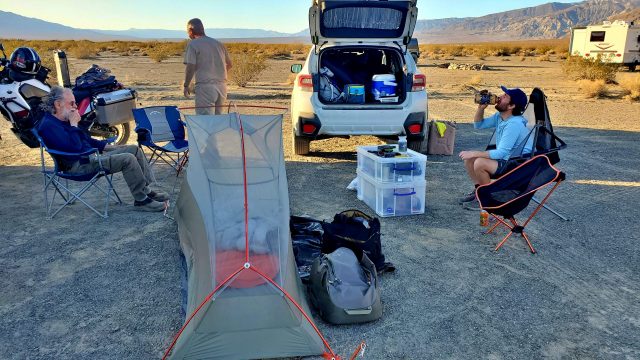
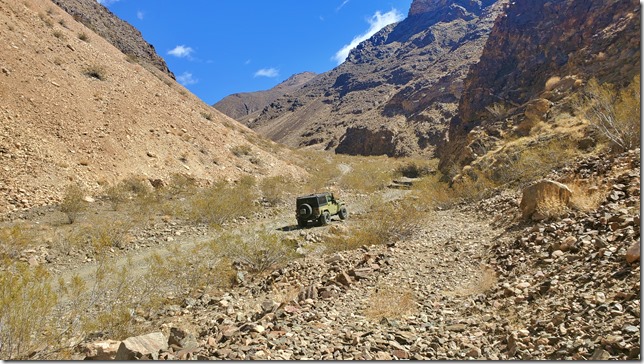
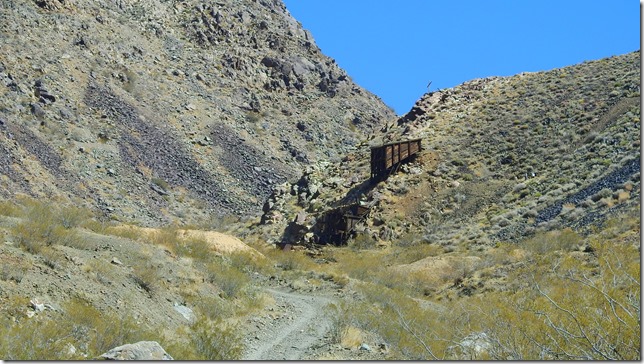
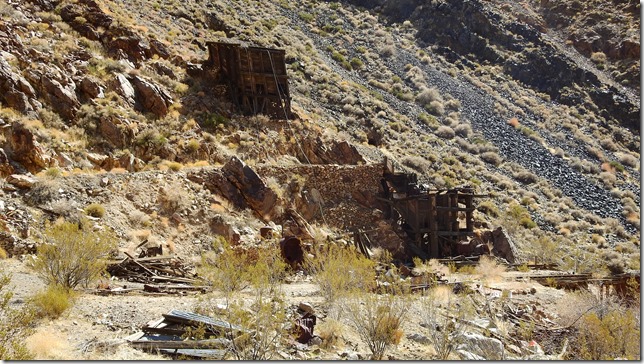
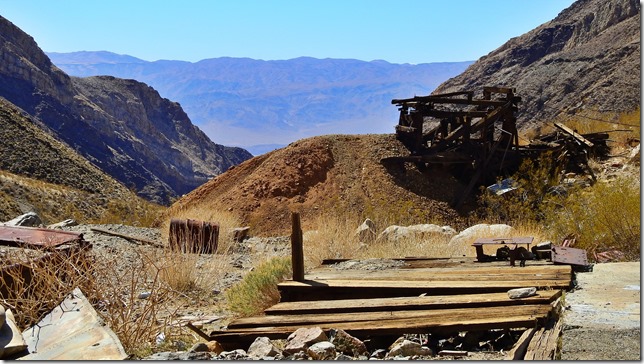
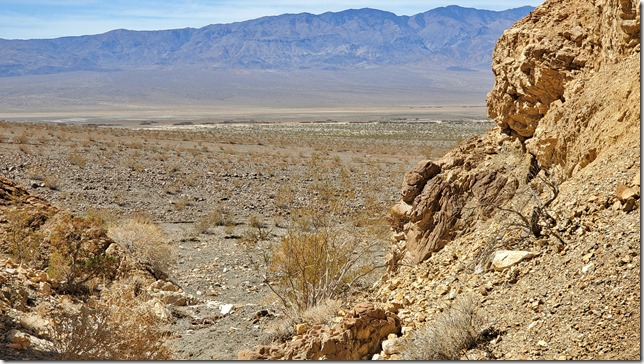
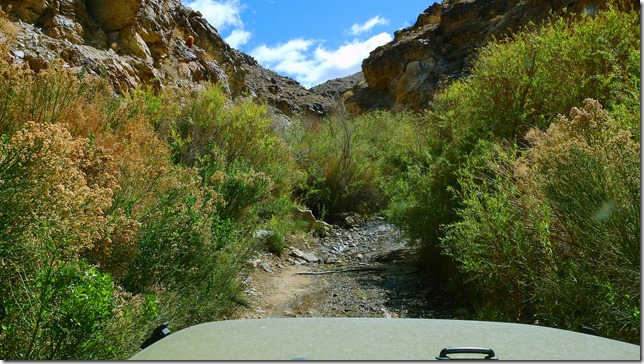
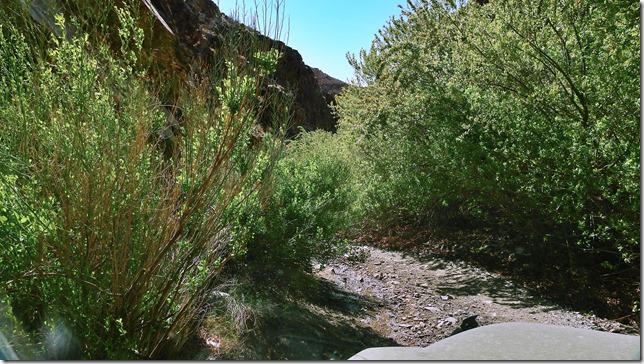
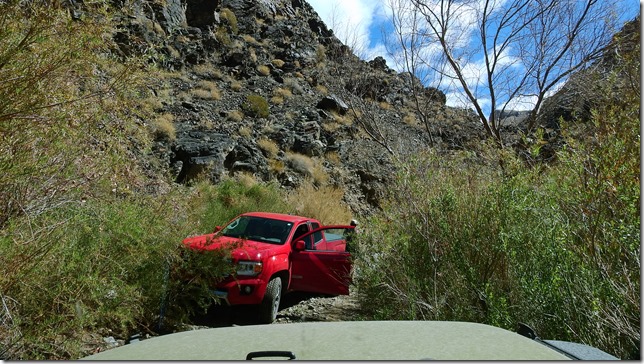
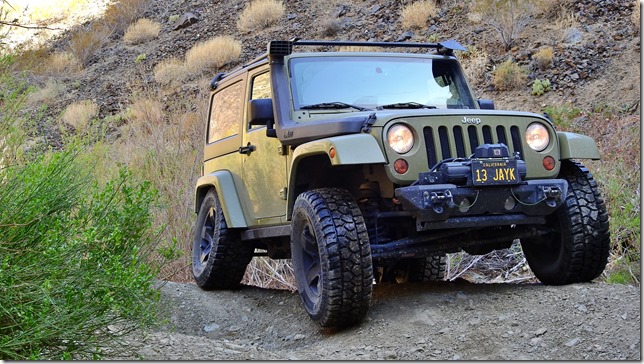
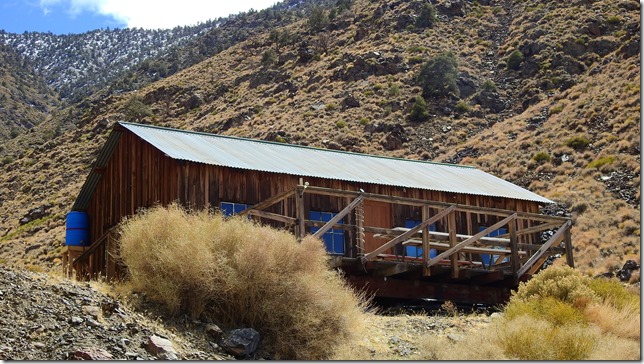
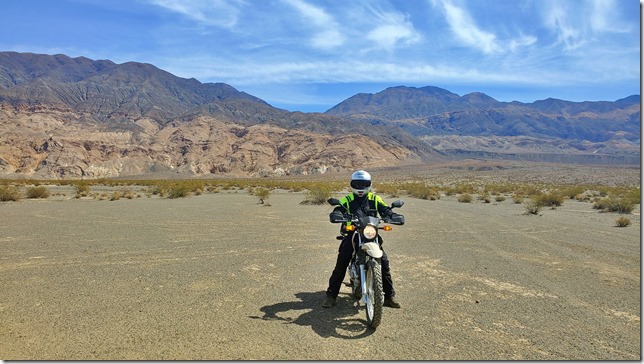
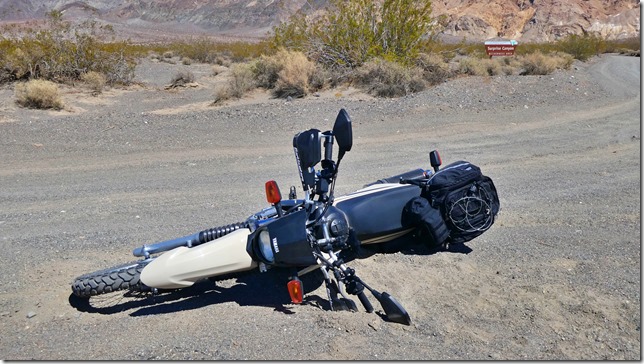
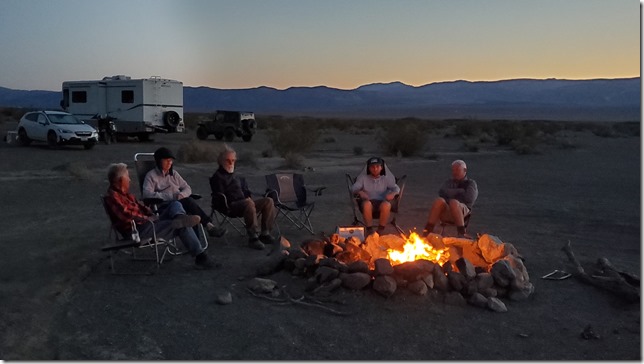
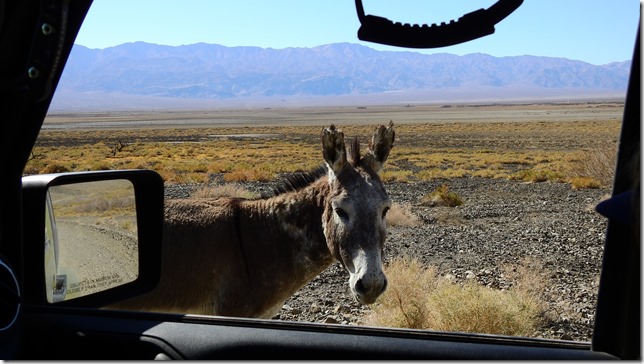
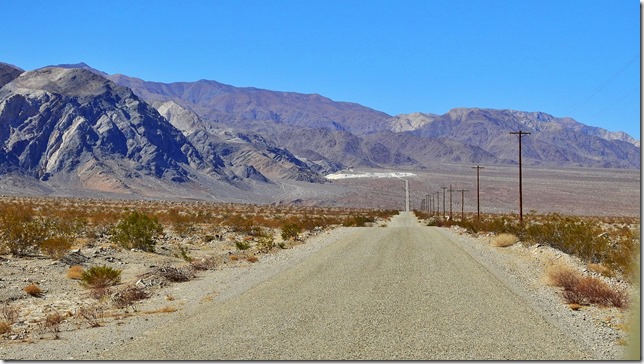
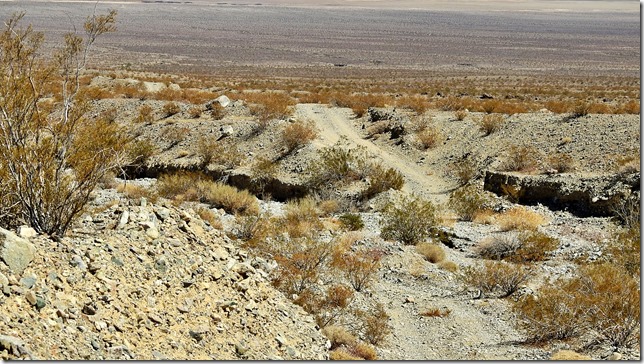
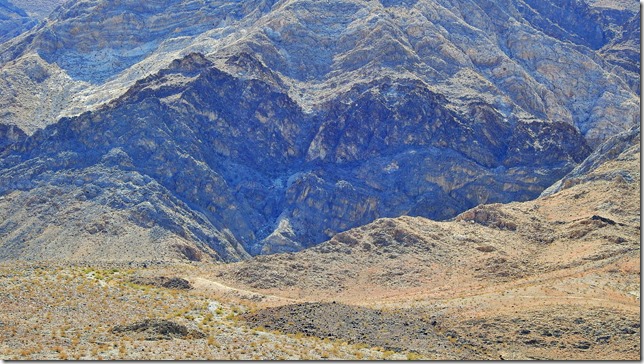
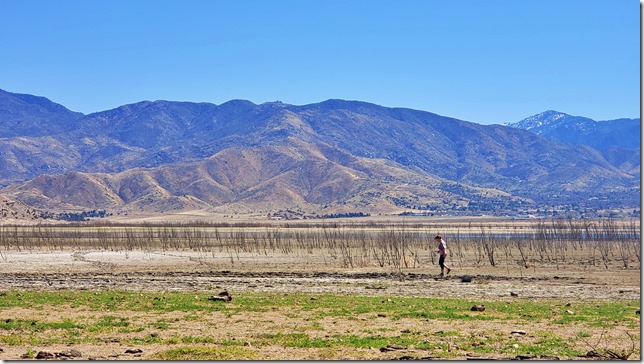
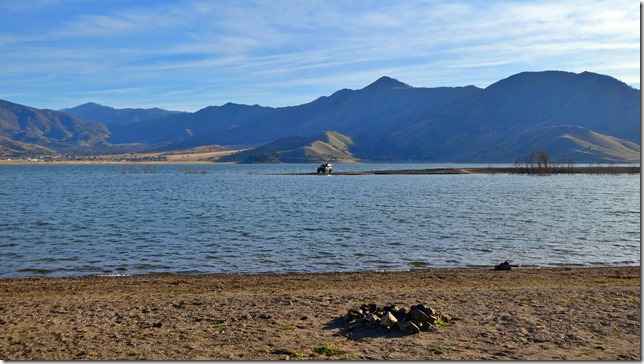
Thank you for showing us so much of a world we will probably never visit. It’s so beautiful. Spent 4 days in Death Valley 14 years ago and absolutely loved it. Have a feeling that our RVing days are numbered but we will follow you in your travels as long as you continue.
Hi Gerri,
well the Wuflu and my Lyme disease have cut back on our travels a bit — but we’re hoping to get out again in the Fall.
Stay tuned…
G.
Hi Greg, it’s Rob from SV just down the road. Thanks for taking us fellow adventurers along. Appreciate you opening our eyes to those off the Highway adventures we pass by regularly on 395.
I spent 5 days in April in my 16’ Casita at Lone Pine , day hiking around the base of Whitney. Had a great time.
Glad you are getting back to more normal life. Was wondering why you stayed in the wind so long instead of moving? Or were you thinking like I do, “surely it will be better tomorrow? “ I do think us Coastal Dwellers have no idea of how consistently the wind blows out there or how quickly it comes up. I remember one time in DV I had my Trailer Awning deployed and lost it to one of those instant mighty winds.
Also wondering if you found out what was ailing Howie?
Best Wises
Robbie
Hey Rob,
we stayed in the wind because it was EVERYWHERE. There was no escape within 500 miles or so.
As for Howie, it’s been a long road, but we THINK we’ve found all the thermal problems.
With our lackluster hot-summer travel schedule, we haven’t even taken him out for a test drive yet.
I love the main photo,of Greg looking in the car window. I know it’s been ages since we saw you ……..
Another amazing tribute to your great countryside. I agree – a campfire, friends and family! A great read. Thanks Greg and Karin.
Always enjoy your travels and posts. Thanks!